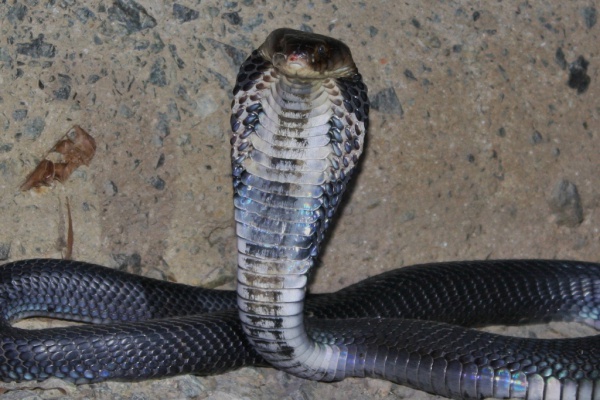Facts About Chinese cobra
The Chinese cobra, also known as the Taiwan cobra, is a venomous snake commonly found in southern China, Taiwan, and nearby regions. First described by Theodore Edward Cantor in 1842, this snake belongs to the Elapidae family. It is one of the most frequently encountered venomous snakes in China and Taiwan and is responsible for many snakebite incidents.
The genus name "Naja" is derived from the Sanskrit word "nāgá" meaning cobra, while "atra" is Latin for "dark" or "black." In Mandarin, it is referred to as "Zhōnghuá yǎnjìngshé" which translates to "Chinese spectacled snake." The appearance of these snakes can vary, but they often feature iridescent black coloring and distinctive markings, including a hood that sometimes resembles eyeglasses.
Chinese cobras typically grow to a length of 1.2 to 1.5 meters, although some individuals can reach up to 2 meters. When threatened, they can be quite aggressive, raising their forebodies, spreading their hoods, and striking if necessary. Their diet includes rodents, frogs, toads, and even other snakes. They are active during the day and at dusk and are adaptable to various environments, from woodlands to grasslands.
Chinese cobras reproduce by laying eggs, with mating and egg-laying occurring over an extended period. Their venom is highly toxic, containing both neurotoxins and cardiotoxins. Although they are not spitting cobras, some individuals can eject venom when they feel threatened. A bite from a Chinese cobra can cause symptoms such as wound darkening, localized redness, swelling, pain, and even tissue necrosis. Fortunately, antivenom is available, making fatalities much rarer nowadays.
